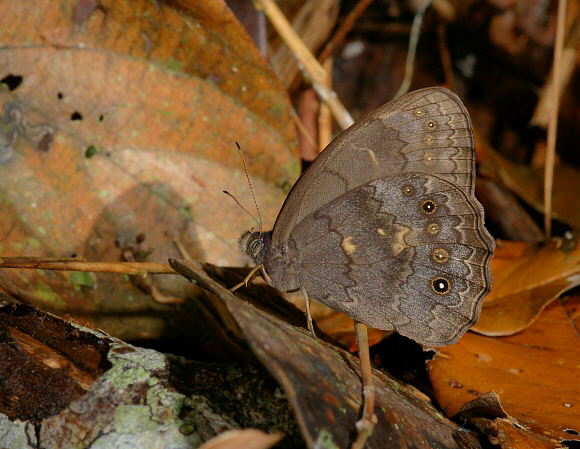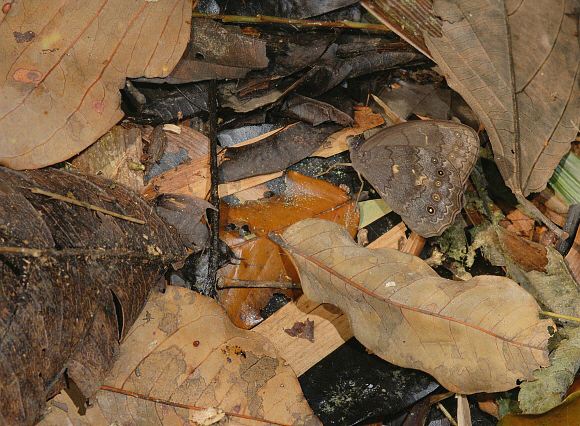
Introduction
There are 400 currently known members of the sub-tribe Euptychiina, which includes all of the neotropical “ringlet” butterflies. Many of the taxa are very difficult to identify, even to genus level, and there is considerable contention amongst taxonomists as to which genus a given species should be assigned, so the same species often appears in differing genera in various books, depending on whether the author favours “splitting” or “lumping” the taxa.
Until fairly recently most of the Euptychiina were included in the genera Euptychia and Taygetis but revisions by Forster ( 1964 ) and Lamas ( 2004 ) divided these “convenience” genera into a number of arguably valid smaller genera, one of which is the Pseudodebis – a group of 5 species previously assigned to Taygetis.
Pseudodebis valentina is easily recognised by virtue of the prettily scalloped submarginal line and the jagged post basal and post median lines. These markings are constant from one individual to another, although the ground colour can vary between greyish-brown and bronze. The ocelli are constant in number but variable in size. The butterfly is widespread and common, found from Venezuela to Bolivia.

Habitats
This species occurs east of the Andes in primary rainforest at altitudes between about 100-1000m.

Lifecycle
To be completed.

Adult behaviour
The butterflies are solitary in behaviour, but invariably several will be found within the same vicinity. They are active mainly in the relative coolness and shade of the early morning, and remain hidden deep amongst the undergrowth during the heat of the day.
In common with other neotropical Ringlets they feed as adults on juices extracted from fungi and rotting vegetation.
